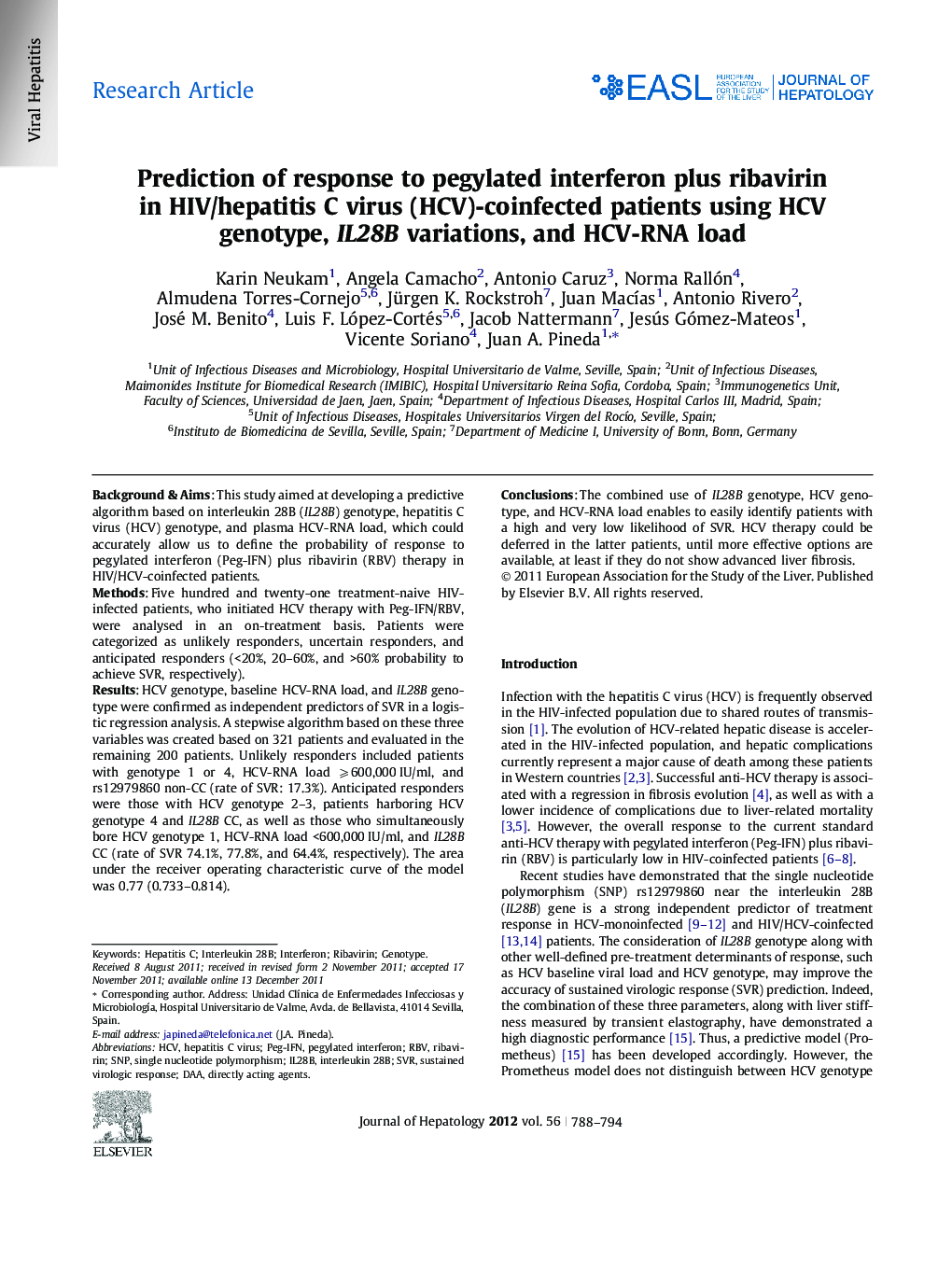| Article ID | Journal | Published Year | Pages | File Type |
|---|---|---|---|---|
| 6107581 | Journal of Hepatology | 2012 | 7 Pages |
Background & AimsThis study aimed at developing a predictive algorithm based on interleukin 28B (IL28B) genotype, hepatitis C virus (HCV) genotype, and plasma HCV-RNA load, which could accurately allow us to define the probability of response to pegylated interferon (Peg-IFN) plus ribavirin (RBV) therapy in HIV/HCV-coinfected patients.MethodsFive hundred and twenty-one treatment-naive HIV-infected patients, who initiated HCV therapy with Peg-IFN/RBV, were analysed in an on-treatment basis. Patients were categorized as unlikely responders, uncertain responders, and anticipated responders (<20%, 20-60%, and >60% probability to achieve SVR, respectively).ResultsHCV genotype, baseline HCV-RNA load, and IL28B genotype were confirmed as independent predictors of SVR in a logistic regression analysis. A stepwise algorithm based on these three variables was created based on 321 patients and evaluated in the remaining 200 patients. Unlikely responders included patients with genotype 1 or 4, HCV-RNA load ⩾600,000 IU/ml, and rs12979860 non-CC (rate of SVR: 17.3%). Anticipated responders were those with HCV genotype 2-3, patients harboring HCV genotype 4 and IL28B CC, as well as those who simultaneously bore HCV genotype 1, HCV-RNA load <600,000 IU/ml, and IL28B CC (rate of SVR 74.1%, 77.8%, and 64.4%, respectively). The area under the receiver operating characteristic curve of the model was 0.77 (0.733-0.814).ConclusionsThe combined use of IL28B genotype, HCV genotype, and HCV-RNA load enables to easily identify patients with a high and very low likelihood of SVR. HCV therapy could be deferred in the latter patients, until more effective options are available, at least if they do not show advanced liver fibrosis.
